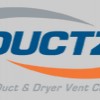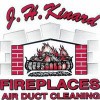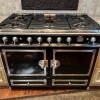
Heating, ventilation, and air conditioning (HVAC) systems have been shown to act as a collection source for a variety of contaminants that have the potential to affect health, such as mold, fungi, bacteria, and very small particles of dust. The removal of such contaminants from the HVAC system and home should be considered as one component in an overall plan to improve indoor air quality. We use Angie's List to assess whether we're doing a good job keeping valued customers like you happy. Please visit AngiesList.com/Review/138952 in order to grade our quality of work and customer service.
DUCTZ Diagnostic Services are regularly analyzed by mechanical system specialists from the very best in the country. When you need to know if a mechanical system contains microbial growth, bacteria and collect other particulates, DUCTZ professionals can provide thorough, qualified analysis and reliable answers to your questions. DUCTZ professionals analyze the mechanical systems, taking into account the environmental conditions such as temperature, relative humidity, moisture intrusions, water damage, building pressurization, carbon dioxide levels and fungal dispersion.
Air duct sealing helps improve your home in may ways. In houses with forced-air heating and cooling systems, ducts are used to distribute conditioned air throughout the house. In a typical house, however, about 20 percent of the air that moves through the duct system is lost due to leaks, holes, and poorly connected ducts. The result is higher utility bills and difficulty keeping the house comfortable, no matter how the thermostat is set. How do you know that your home has poorly performing ducts?
The best way to determine if the HVAC system cleaning was effective is to perform a visual inspection of the system before and after cleaning. If any dust or debris can be seen during the visual inspection, the system should not be considered cleaned. While you can perform your own visual inspection using a flash light and mirror, a professional cleaning contractor should be able to allow you better access to system components and perhaps the use of specialized inspection tools. We use Angie's List to assess whether we're doing a good job keeping valued customers like you happy.
Similar Businesses







